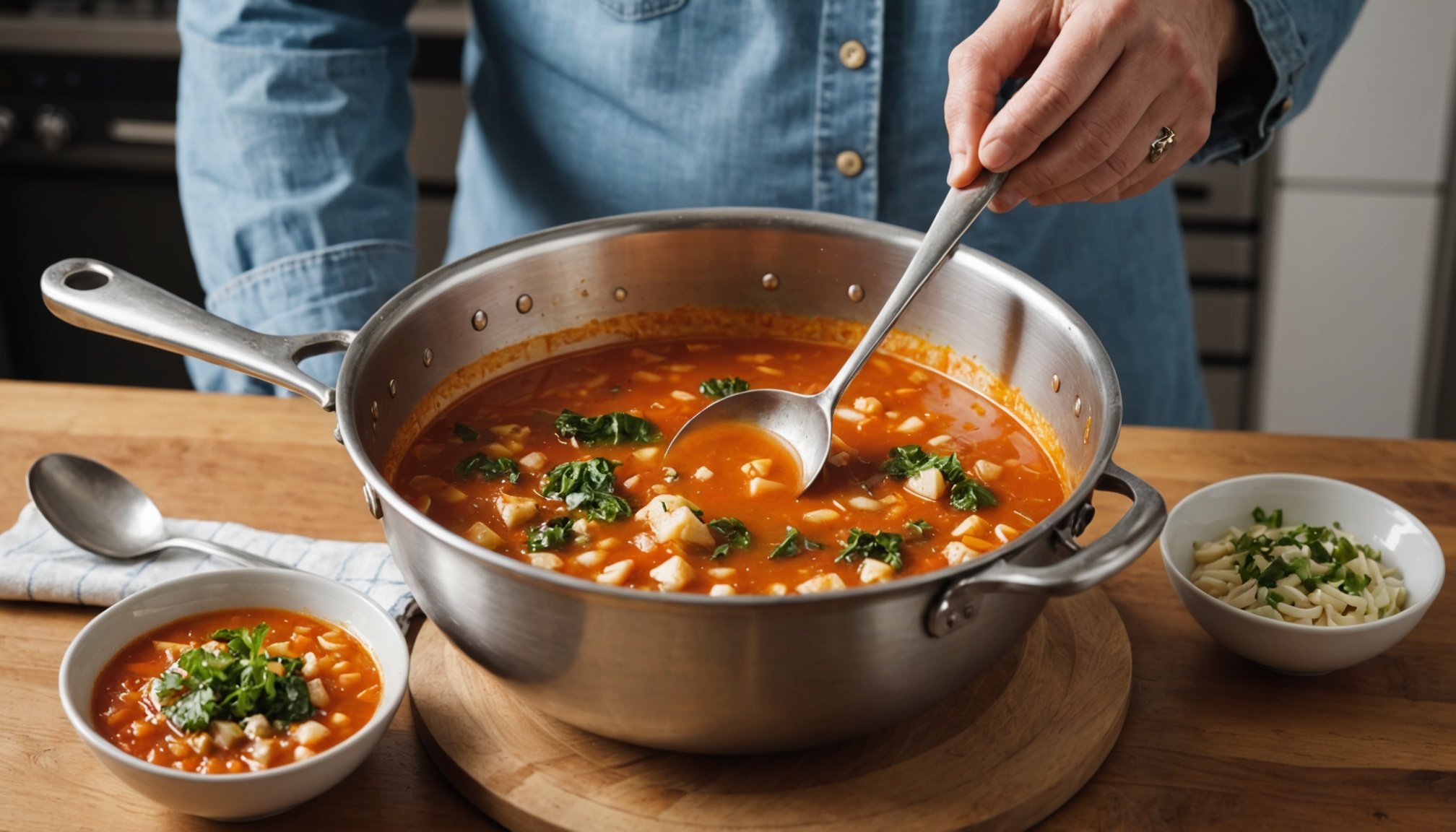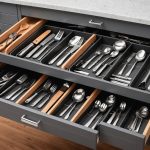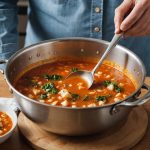Choosing the right heat-resistant soup ladle can transform your cooking experience. With countless options on the market, finding one that won't warp or melt is essential for both safety and efficiency. Key factors like material, design, and even heat tolerance can make all the difference. Understand what to look for and how to ensure your ladle serves you well for years to come. Enjoy your soups without the worry of a melting ladle!
Understanding Heat Resistance in Soup Ladles
Exploring the essentials of temperature resilience in kitchen tools.
Topic to read : Discover the Best Materials for Ultimate Non-Stick Roasting Pans: Your Guide to Hassle-Free Cooking!
Heat Resistance Ratings
Heat-resistant soup ladles are essential for safe and efficient cooking. These tools are rated based on their ability to withstand high temperatures without degrading. Temperature ratings indicate the maximum heat a ladle can endure before it risks warping or melting. Typically, these ratings are measured in degrees Fahrenheit or Celsius, providing a clear guideline for safe usage.
Material Properties
The choice of material significantly impacts a ladle's heat resistance. Common materials include stainless steel, silicone, and nylon. Each has distinct heat resistance capabilities:
Also to discover : Discover the unique flavor of maille mustard today!
- Stainless Steel: Highly durable, withstands extreme temperatures.
- Silicone: Flexible, heat-resistant up to 482°F (250°C), ideal for non-stick cookware.
- Nylon: Affordable, heat-resistant up to 400°F (204°C), but may warp under higher temperatures.
Importance of Heat Resistance
Ensuring your soup ladle has the proper heat resistance is crucial. It prevents the tool from warping or melting, which could compromise food safety and quality. Choosing the right ladle enhances your cooking experience, offering peace of mind and longevity for your kitchen utensils.
Material Comparisons for Durability
Exploring the strengths and weaknesses of ladle materials.
Pros and Cons of Silicone Ladles
Silicone ladles are celebrated for their flexibility and heat resistance. These ladles can endure temperatures up to 482°F (250°C), making them suitable for various cooking tasks. Their non-stick nature ensures they won't scratch cookware, preserving the integrity of your pots and pans. However, silicone ladles may not be as durable as metal options, sometimes lacking the rigidity needed for heavy-duty tasks.
Pros and Cons of Metal Ladles
Metal ladles, often made from stainless steel, are renowned for their durability and ability to withstand extreme temperatures. They offer a robust solution for stirring and serving hot liquids without risk of melting or warping. Despite their strength, metal ladles can scratch non-stick surfaces and may become hot to the touch, necessitating caution during use.
Composite Materials and Their Benefits
Composite ladles combine the best of both worlds, offering a balance between heat resistance and durability. These ladles often feature a metal core with a silicone or nylon coating, providing strength while protecting cookware. This innovative approach caters to diverse cooking needs, ensuring longevity and versatility in the kitchen.
Essential Features to Look For
Discover the key elements that enhance your cooking experience.
Ergonomic Design
An ergonomic design is crucial for ensuring comfort during prolonged use of a ladle. A well-designed handle fits naturally in your hand, reducing strain and fatigue. This is especially important when handling hot liquids, where stability and control are paramount. Look for ladles with soft grips or contoured shapes that align with your hand's natural curve.
Non-Stick Surfaces
Non-stick surfaces are a game-changer in the usability and cleaning of a ladle. These surfaces prevent food from adhering, making it easier to serve soups and sauces smoothly. They also simplify cleaning, as residues are less likely to cling. This feature not only enhances cooking efficiency but also prolongs the life of your ladle by minimizing wear.
Additional Features
Consider additional features that can elevate your ladle's functionality:
- Long handles: Provide better reach and protect from heat.
- Integrated strainers: Allow for easy draining of excess liquid.
- Heat-resistant materials: Ensure safety and longevity.
These features contribute to a more versatile and effective kitchen tool, making your cooking endeavors more enjoyable and efficient.
Care Instructions for Longevity
Ensuring your ladle remains a reliable kitchen tool through proper care.
Cleaning Recommendations for Different Materials
Proper ladle maintenance begins with understanding the cleaning needs of different materials. Stainless steel ladles can be cleaned with regular dish soap and a non-abrasive sponge. For silicone ladles, avoid harsh chemicals; instead, opt for mild detergents to preserve their non-stick properties. Nylon ladles require gentle cleaning to prevent wear. Always ensure thorough drying to avoid rust or mold.
Storage Tips to Prevent Damage
Storing your ladles correctly is essential for maintaining their shape and integrity. Hang ladles on hooks to prevent warping, especially for those made of nylon or silicone. If drawer storage is necessary, ensure they are not crushed under heavier items. Consider using drawer organizers to separate and protect each ladle.
Signs of Wear and When to Replace
Regular inspection of your ladles can help identify signs of wear. Look for cracks, discoloration, or melting in silicone and nylon ladles. Metal ladles may show rust or bent handles. Replace any ladle that shows significant damage to ensure safety and performance. Maintaining a routine check will prolong the life of your kitchen tools.
Brand Recommendations and User Reviews
Evaluating the top ladle brands and user experiences.
Overview of Top-Rated Brands
When selecting heat-resistant soup ladles, several brands consistently receive high marks for quality and durability. Notable names include OXO, KitchenAid, and Cuisinart, each offering unique features tailored to various cooking needs. These brands are celebrated for their heat resistance and ergonomic designs, ensuring a comfortable and safe cooking experience.
Summary of User Reviews
Customer feedback is invaluable when assessing the performance of top ladle brands. Users frequently praise the durability and heat resistance of these ladles, noting their ability to withstand high temperatures without warping. However, some reviews highlight issues such as handle discomfort or difficulty in cleaning.
Common Praises:
- Excellent heat resistance
- Comfortable grip
- Versatile design
Common Complaints:
- Handle may get hot
- Challenging to clean
Recommendations Based on Expert Reviews
Expert assessments align with user experiences, emphasizing the importance of heat resistance and ergonomic design. For those seeking reliable and efficient kitchen tools, choosing from top ladle brands like OXO or KitchenAid is advisable. These brands offer a balance of functionality and comfort, making them a worthwhile investment for any kitchen.
Frequently Asked Questions
Common concerns addressed for better understanding.
Safety and Toxicity of Materials
Ladle FAQs often revolve around the safety and toxicity of materials used in kitchen tools. Users frequently inquire whether materials like silicone or nylon are safe for cooking. It's essential to choose ladles made from food-grade materials to ensure they do not leach harmful chemicals into your food.
Key Considerations:
- Ensure materials are BPA-free.
- Opt for FDA-approved ladles.
Temperature Limits for Different Ladle Types
Understanding the temperature limits of various ladles is crucial in preventing damage. Each material has its threshold, and exceeding it can lead to warping or melting.
Temperature Guidelines:
- Silicone: Up to 482°F (250°C)
- Nylon: Up to 400°F (204°C)
- Stainless Steel: Withstands high temperatures without specific limits
Troubleshooting Common Ladle Issues
Troubleshooting ladle issues is a common concern among users. Common problems include warping, melting, and handle discomfort. To address these, ensure you're using the ladle within its specified temperature limits and consider ergonomic designs for better comfort.
- Solution Tips:
- Use heat-resistant gloves if handles get hot.
- Regularly inspect for wear and replace as needed.













